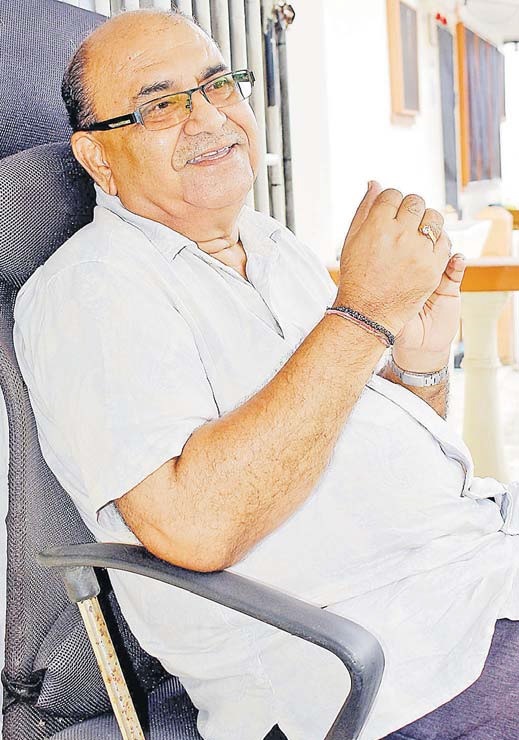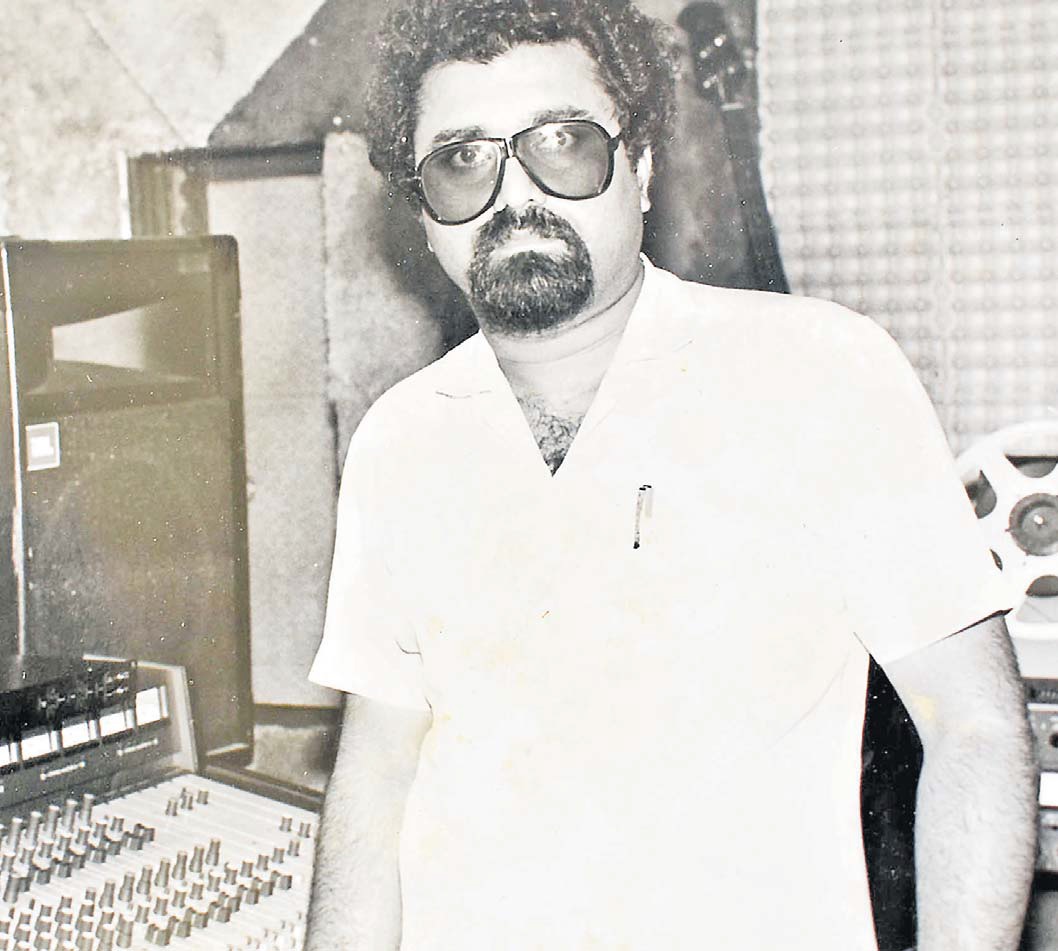For more than 40 years, Ramesh Hargovind has been a hitmaker. He has recorded and produced more than 47,000 songs by countless artists.
The Toorak resident has travelled the length and breadth of Fiji and faithfully captured English, iTaukei and Hindi music created by locals.
And in the process he helped transform ordinary men and women into music superstars. An amazing achievement for someone who does not play an instrument and who can’t carry a tune.
What Hargovind does have is an ear that knows something good when he hears it. His uncanny ability has transformed relatively unknowns into household names.
“When I was very young I loved music very much and it always made me curious to work out all the ingredients that went together to make a good song,” the 69-year-old recording engineer and producer shared.
“And over the years I have used that knowledge to blend and create good songs.”
The now retired music industry veteran said any artists or groups that wanted to have a music career should have a good producer to guide them.
“Sometimes artists or groups are so carried away with the creative process, they do not understand what does and does not work.
“So they need someone to tell them what and what not to do.”
Hargovind said his career as an engineer and producer began at Procera Music in 1978 when he was 36 years old.
From 1978 to 1980 he learnt on the job and developed his own sound.
In the early 80s, he met legendary local recording engineer Max Baran who was working for the Fiji Broadcasting Commission at the time and learnt a few tricks.
Hargovind’s quest to take Fiji’s recordings to another level resulted in him receiving a scholarship sponsored by the South Pacific Commission.
He travelled to Australia for two months to learn firsthand about the recording process from A to Z. Hargovind worked with Radio Australia and Radio Melbourne and he gained vast knowledge –– even of recording orchestras, 150 piece bands, and how to record piano and all different instruments.
“After two months I came back to Fiji and we upgraded our recording equipment at Procera to keep up to par with Australia.
“At that time we used a reel-to-reel system and we started with two tracks then developed to four tracks, then went on to eight tracks and then 16 tracks.
“I started recording a lot of Methodist Church choirs and also some of the big artists like Seru Serevi, Georgina Ledua, Marika Gata and Wise Vatuwaqa who released a special album called Bula Talei.”
Hargovind said sigidrigi groups had been treated as outsiders for some time, so he began to work on new techniques to capture the voices, harmonies and music.
He began recording groups such as Voqa Kei Gau E Loma, Kabu ni Delai Kade, Blue Lagoon Trio and Sakisaki ni Tobu Karakarawa –– all sigidrigi groups with huge followings at the time. Hargovind said he went 16 times to Yasawa to do recordings.
“I liked going on the small boats that took six to seven hours because Nabukeru Village was right at the top of the Yasawa Group.
“Travelling there by boat helped me understand what the music was about and what the artists were trying to get across to the audience.”
Sometimes he went with two assistants on board Blue Lagoon Cruises vessels and enjoyed the peace and tranquillity of the journey.
Hargovind said another highlight in his career was when he went to Saqani, Vanua Levu for four days and recorded Vagadrokadroka ni Saqani and Vagadrokadroka ni Eli.

“The good thing about recording in the village setting was that the singers would be relaxed and it came out in their songs.
“But when they came into the studio, I could hear the difference, they are a bit frightened because of the atmosphere and
the lights.”
Hargovind said he noticed this with the Qauia Church choir in Lami and Matasiga Church choir from Nausori.
Mr Ramesh said he believed that 90 per cent of all recordings done throughout Fiji and played by the two radio stations were
engineered and recorded by him.
“Now the new generation of people have come in and the music they are producing ––– they all sound like my recordings from
the past because they can’t change that particular sound.
“They need to find out what is special in each artist or group and work on developing that to create a new sound.
“I believe what worked to my advantage was the fact that I had two jobs – one was recording engineer and the other was producer.”
Hargovind said when Saimoni Vuatalevu went to the South Pacific Arts Festival in Australia, he did all the music tracks and
Vuatalevu was placed third in the competition.
He said it took them nearly three weeks to put all the music together.
Hargovind said the longest recording he ever did was with Eremasi Tamanisau.
He said it took them seven weeks to complete “and it was so beautiful, the way Tamanisau composed and put together his
songs”.
He said one of the tracks he produced Ena Dela Ni Wai Siliva continued to be played on radio today.
Another group that he produced and went to cult-like status was Suva-based reggae outfit Exodus.
“After the 1987 coup, we recorded a group called Exodus – they were a band from Suva.
“While I was sitting in the recording studio, I found it hard to focus because there was hardly any new music, business was going
down and it was all because of the coup. Exodus actually helped us survive.
“When their album was released, those guys became so popular that they toured Tonga, New Caledonia and everywhere.
“They made a lot of money but they lacked good management at that time,” he added.
Hargovind said Exodus took Procera Music up at a time when their competitor South Pacific Recordings was enjoying a lot of success with the golden voice of Fiji at the time Lagani Rabukawaqa.
After Exodus, he said another artist Jimmy Subhaydas also gave Procera Music a lot of success.
“I can tell you how popular Jimmy was – one day some girls chased him along the Nasese sea wall and tore his shirt, even the
police couldn’t control them.
“I recorded both Jimmy’s Indian and iTaukei songs and he became a superstar overnight.”
Hargovind said his limited understanding of the iTaukei language did not hinder the recording process.
“I can pick out straightaway if someone is singing out of pitch or key and sometimes I know the artists didn’t like it.”
He said one of his best stories was when local music icon Sakiusa Bulicokocoko visited him in the studio.
“He was always a big joker but on this particular day, Sakiusa was really playful, so I asked him to tell some jokes and I recorded
it.
“I bought a carton of beer, mixed some grog and after one basin, we all sat around and drank beer while Sakiusa started
strumming his ukulele and telling jokes non-stop for 60 minutes.
“We recorded it, did a quick mix and released it as ‘Sakiusa’s Party’ and within three weeks we sold about 1900 cassettes.
“Nobody believed it was possible but we did it by thinking outside the box.”
Hargovind said he had retired from music but does “a little bit of recording here and there”.
“The greatest thing about Fiji is that music is natural.
“There are amazing and talented people walking around. If you go to church, the choir is there, in the village the sigidrigi
bands are there.
“The music is all around us, it’s just a matter of finding the ingredients and the opportunity to turn it into something
timeless and beautiful.




